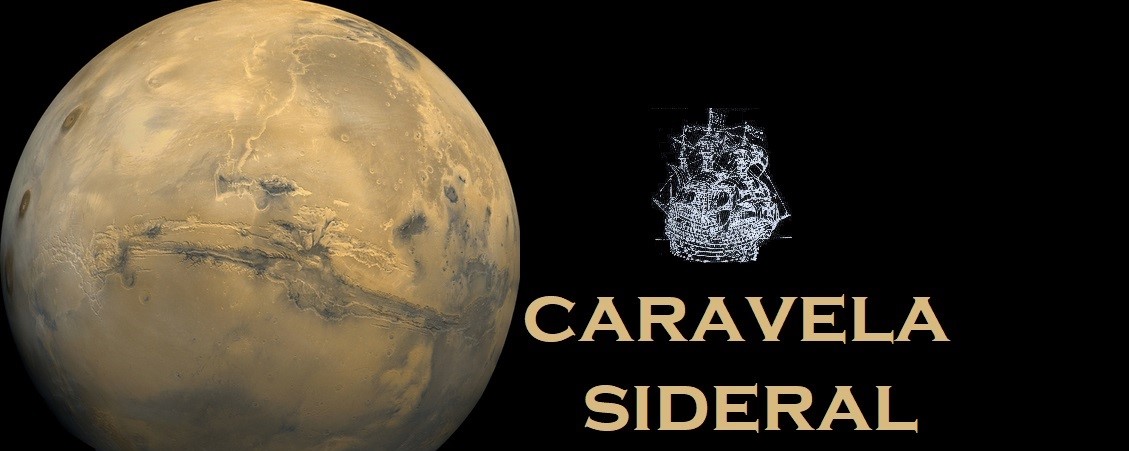Mercúrio, o primeiro planeta a contar do Sol, apesar de ser um sítio hostil e inóspito, já foi visitado por duas missões da Nasa, a Mariner 10 entre 1974 e 1975 e a Messenger entre 2011 e 2015.
 |
| Image taken in September 1974 by the historic Mariner 10. Imagem obtida em Setembro de 1974 pela histórica Mariner 10. Imagem Nasa |
 |
| Messenger took this magnificent photo of Mercury in August 2013. A Messenger tirou esta magnífica foto de Mercúrio em Agosto de 2013. Imagem Nasa |
BepiColombo will be accelerated by electric solar propulsion and the gravitational effect of the Earth, Venus and Mercury, in a slow but economic route that will take the probe to its destination in 2015, and to the complicated insertion in the orbit of the small planet. Mercury is not an easy place to place probes into orbit due to the Sun's gravitational pull.
During the long trip, BepiColombo will consist of three modules, the transfer module or Mercury Transfer Module (MTM), the Mercury Planetary Orbiter (MPO) and the Mercury Magnetospheric Orbiter (MMO).
In the vicinity of Mercury, the transfer module will separate from the set with the two orbiters and only after the orbital insertion the two small spacecraft will separate.
It's a complex mission in terms of engineering and planetary navigation, but it's nothing new to ESA and Jaxa, who have often shown their ability.
In addition to mapping the planet at different wavelengths and conducting mineralogical and geological studies, the two probes will try to learn more about the planet's core and its magnetosphere and certainly marvel us great photos.
No entanto, estas duas missões não chegaram para satisfazer a curiosidade dos cientistas acerca de Mercúrio e por isso a Europa e o Japão juntaram-se num projecto a que chamaram BepiColombo e que deverá ter início este ano, com o lançamento da nova sonda.
A BepiColombo vai ser acelerada pela propulsão solar eléctrica (SEP) e pelo efeito gravitacional da Terra, Vénus e Mercúrio, numa rota lenta mas económica que deverá levar a sonda até ao seu destino em 2015, altura em que se dará a complicada inserção na órbita do pequeno planeta. Mercúrio não é um local fácil para a colocação de sondas em órbita devido à força gravitacional do Sol.
Durante a longa viagem, a BepiColombo será constituída por três módulos, o módulo de transferência ou Mercury Transfer Module (MTM), o Mercury Planetary Orbiter (MPO) e o Mercury Magnetospheric Orbiter (MMO).
Na proximidade de Mercúrio, o módulo de transferência vai separar-se do conjunto com os dois orbitadores e só após a inserção orbital é que as duas pequenas naves se irão separar.
É uma missão complexa, em termos de engenharia e de navegação planetária, mas não é nada de novo para a ESA e para a Jaxa, que já mostraram muitas vezes a sua capacidade.
Além de mapear o planeta em diferentes comprimentos de onda e de efectuar estudos mineralógicos e
.geológicos, as duas sondas vão tentar saber mais sobre o núcleo do planeta e sobre a sua magnetosfera e certamente maravilhar-nos com excelentes fotografias.
 |
| BepiColombo in launch configuration, for testing. BepiColombo em configuração de lançamento, para testes. |
 |
| Illustration of / Ilustração do Mercury Planetary Orbiter (MPO) |
 |
| Mercury Magnetospheric Orbiter (MMO) |
Animação com a rota da BepiColombo até Mercúrio
Imagens ESO/Jaxa























